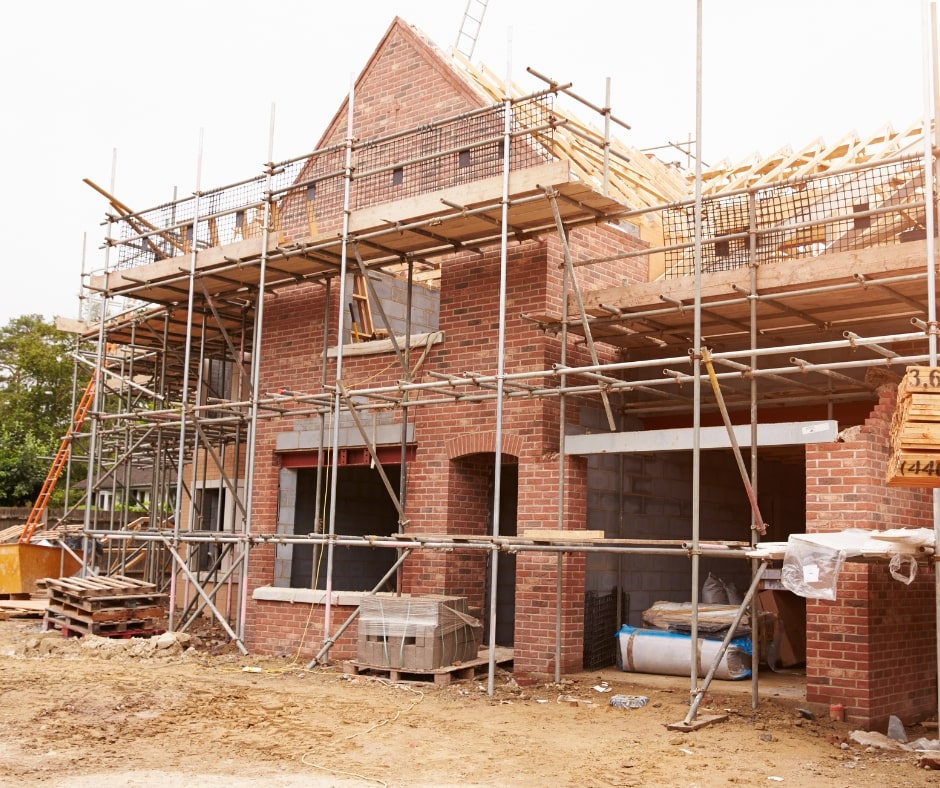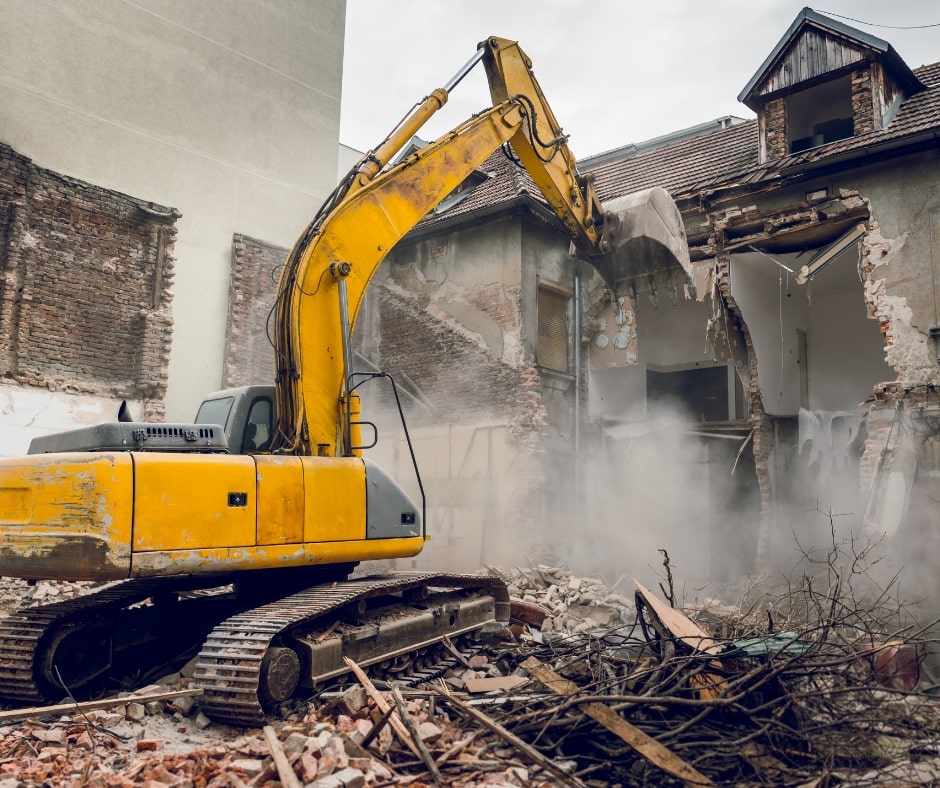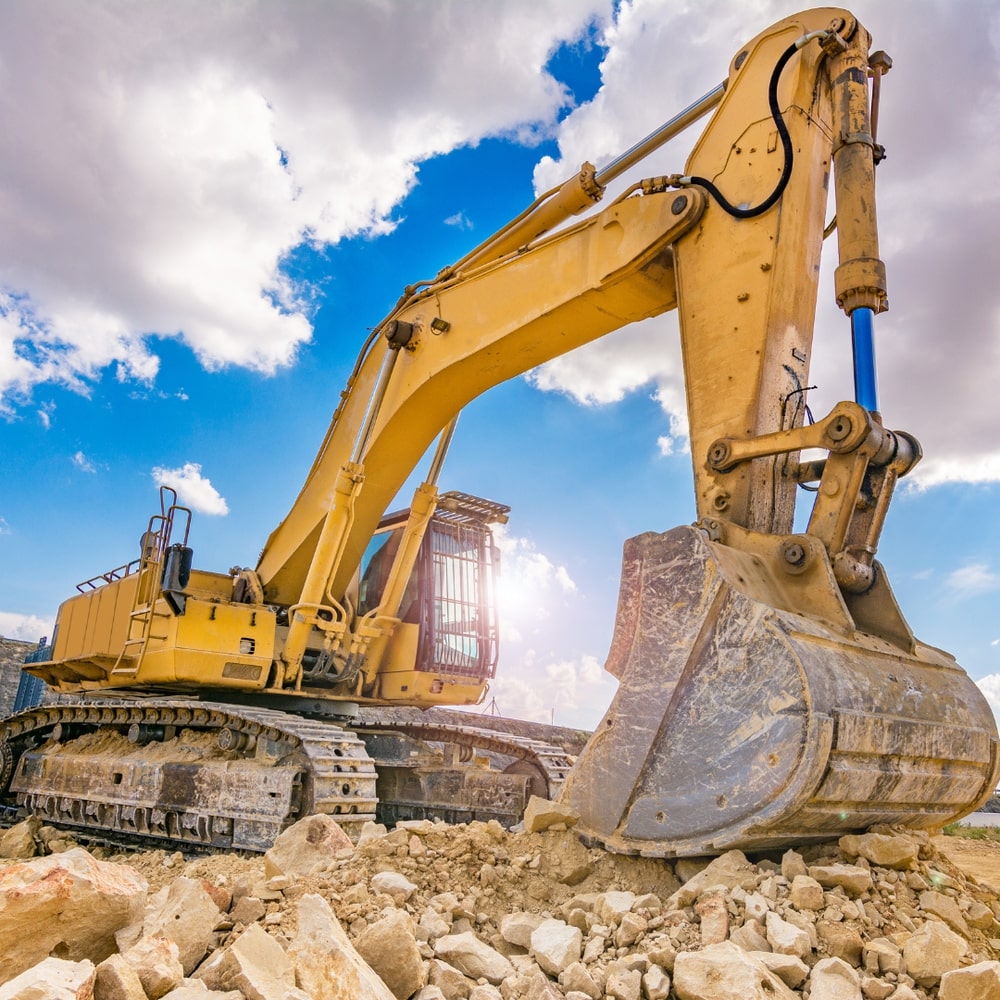If you’ve ever tackled a DIY project, you’ll know how much waste these jobs can create. Whether it’s the packaging the materials come in, the stuff you’re taking out, or the extra materials you didn’t need in the end chances are by the time you’ve finished there will be a car full of rubbish to take the tip! Now imagine how much waste a construction company or even a tradesman creates day to day. All businesses create waste, but construction is one of the biggest producers, in this guide we’ll show you what sort of waste each trade produces and how they are commonly handled.

A new build development in the UK
Defining construction waste.
When you hear the term “construction waste” piles of rubble spring to mind, but what do we actually mean by construction waste? Well, you can think of construction waste as any material discarded after the following types of work:
- Construction (obviously)
- Demolition
- Excavation
- Landscaping
- Renovations
- Road or other public area works
- Site clearances
- Shopfitting

As you can see construction waste can come from a number of activities meaning that a whole host of materials can fall under the umbrella of construction waste. To help sort this waste, they are classified into three groups:
Inert waste- This is the material you commonly associate as construction waste, the piles of rubble we mentioned earlier. Basically, it is solid waste that doesn’t decompose and includes concrete, stones, tarmac, etc. This is the most common category of construction waste.
Non-hazardous waste- This is basically any waste that won’t harm you or the environment, this includes things like glass, metal, and wood.
Hazardous waste- Any waste that can harm you or the environment is classified as hazardous and often there are specific regulations for dealing with that material such as asbestos (Control of Asbestos Regulations 2012). If you are dealing with hazardous waste or are unsure if your waste classifies as hazardous, I’d recommend getting in contact with a company like this one that can help you manage your hazardous waste.
Common construction waste materials.
Concrete, bricks, stones, and slabs- These materials form the bulk of construction waste, fortunately, you can recycle these materials fairly easily by crushing them into rubble to create hardcore or other aggregates.
Soil, sand, and dredging material- Excavation and other groundworks often create a lot of this sort of waste material. You can reuse soil or sand from one site as filling material on another job, whereas dredging material will often have tree roots or stumps in that will have to be filtered out before you can reuse the soil.
Metal- As well as steel beams used for buildings, there are also copper pipes, electrical cables, boilers, and steel reinforcing bars to consider. Fortunately, you can recycle most metals fairly easily, and in many cases, you are actually paid to get rid of your metal waste.
Wood- You’ll find wood everywhere on construction sites, it’s used for doors, skirting boards, kitchen cabinets, flooring, and framework for stud walls. Most untreated woods are classified as non-hazardous and can be reused fairly easily, but processed or treated timber may be classified as hazardous waste.
Glass- This is another inert waste type that can be recycled easily, you can melt glass down many times to reuse it without sacrificing any of its properties.
Plastic- You’ll have heard a lot of talk about the reduction in plastic waste recently and construction is a key area of focus. Plastic has grown in popularity in the construction industry over the last few decades and has replaced wood and metal in a lot of products such as window frames, doors, guttering, pipework, and electrical switchgear. The reason for this is plastic has a lot of properties that make it ideal for use in the construction industry. It’s lightweight, tough, doesn’t rot, and is an excellent insulator. Advances in plastic recycling technology have made it easier for you to recycle most types of plastic, there is also a big push to reduce the amount of plastic used in the packaging associated with construction materials. You may find that shredded paper is used to protect your items instead of bubble wrap for example.
Tiles, cement, and ceramics- Much of the cement waste created on construction sites is due to the extra material you have left after a job is completed. This unused or unset cement is classified as hazardous and should not be disposed of in normal waste streams. You can recycle tiles and ceramics easily by crushing them to create recycled aggregates.
Plaster, plasterboard, and gypsum- Demolition sites often create a lot of these types of waste materials, which can be difficult for you to recycle. You’ll often be charged extra for any plaster thrown in a skip.
Paints, varnishes, and other solvents- If you’ve ever done any decorating, you’ll often find you have a bit of paint left over in a tin. On a large building site or construction project, this can add up to a significant amount. All paints and other solvents need to be treated as hazardous waste making recycling them very difficult.
Insulation and asbestos- These materials pose serious risks to human health, if you are trying to dispose of any quantity of these materials, I strongly suggest you contact a specialist company such as this one.

As you can see, demolition projects create a lot of waste!
Thank you for reading this short guide on construction waste, hopefully, you now have a better idea of what types of waste to look out for on your next construction project. You can find related posts in the further reading section below and if you do have any other questions you can pop them in the comments section below or email us here, our team love talking rubbish!

